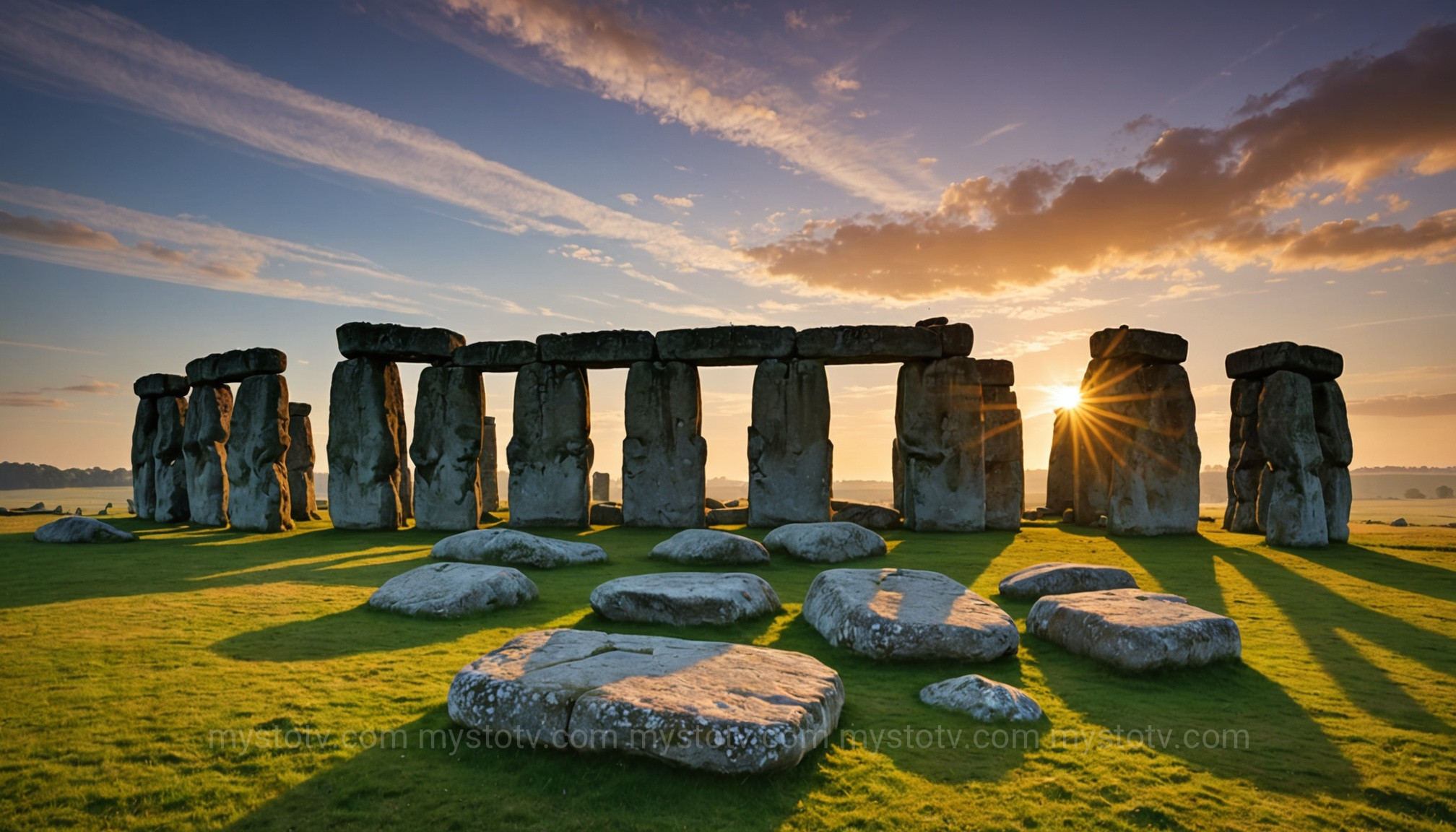Contents
- 1 Unlocking the Secrets of the Pyramids: Construction Ancient Mysteries
- 2 Stonehenge: Celestial Observatory or Ritual Site? Analyzing Ancient Mysteries
- 3 The Nazca Lines of Peru: Geoglyphs and Other Ancient Mysteries
- 4 The Legend of Atlantis: Exploring the Most Famous of All Ancient Mysteries
- 5 Conclusion: The Enduring Allure of Ancient Mysteries
Unlocking the Secrets of the Pyramids: Construction Ancient Mysteries
The Great Pyramid of Giza, the last surviving wonder of the ancient world, stands as a testament to the ingenuity of the Old Kingdom of Egypt. For over 4,500 years, its sheer scale and precision have baffled engineers and scholars. The primary mystery is not why it was built—most Egyptologists agree it was a tomb for the Pharaoh Khufu—but how. The logistics of quarrying, transporting, and lifting millions of massive stone blocks, some weighing up to 80 tons, with the technology available at the time remains one of history's greatest puzzles.
The Monumental Enigma of the Great Pyramid
The core of this ancient mystery lies in the details. The pyramid is constructed from an estimated 2.3 million blocks of limestone and granite, fitted together with breathtaking accuracy. The structure is almost perfectly aligned with the cardinal directions, a feat that would be challenging even with modern surveying equipment. How did a Bronze Age civilization, without iron tools, wheels for transport, or powered machinery, achieve such a monumental task? Theories involving lost technologies or even extraterrestrial assistance have long been popular in speculative fiction, but archaeologists focus on more grounded possibilities.
Plausible Construction Theories for These Ancient Mysteries
Modern research has shed considerable light on these construction-related ancient mysteries. The leading theory suggests the use of sophisticated ramp systems. While a single, long external ramp has been largely discounted due to its impractical size, evidence points towards the possibility of an internal ramp, spiraling up inside the pyramid as it was built. A 2018 discovery by the ScanPyramids mission of a large void within the structure lends some credence to this idea, as the void could be part of such an internal ramp system.
Another theory focuses on the use of water. Engineer John Cadman proposed that a series of water-filled locks or shafts could have been used to float the blocks upwards. Evidence of canals leading to the Giza plateau supports the idea that water was used to transport blocks to the construction site, though its use in lifting them to height is more debated. Ultimately, the answer likely involves a combination of techniques, including levers, sledges pulled over wetted sand, and an immense, highly organized workforce. The true genius may not have been a single secret technology, but rather unparalleled project management.
Stonehenge: Celestial Observatory or Ritual Site? Analyzing Ancient Mysteries

In the heart of the English countryside lies Stonehenge, a prehistoric monument that has captivated scholars for centuries. This circle of massive standing stones, some transported from over 150 miles away, represents one of Europe's most significant ancient mysteries. Constructed in several phases between 3000 and 1500 BC, its purpose has been the subject of intense debate. Was it a sophisticated astronomical calendar, a sacred burial ground, a center for healing, or something else entirely?
The Neolithic Riddle of Stonehenge
The construction of Stonehenge presents a formidable puzzle. The larger sarsen stones weigh up to 30 tons, while the smaller "bluestones" were quarried in the Preseli Hills in Wales, a staggering distance from the site. How Neolithic people, with no written language and limited tools, organized the labor to move and erect these megaliths is a profound question. But beyond the logistics, the deeper mystery is its function. The monument's precise alignment with the sunrise on the summer solstice and sunset on the winter solstice is undeniable, pointing to a deep understanding of celestial cycles.
Astronomical and Ritualistic Explanations
The most widely accepted theory is that Stonehenge served a dual purpose, combining astronomical observation with ritual activity. As an observatory, it could have been used to mark the changing seasons, crucial for an agricultural society. This function would have imbued the site with great power, making it a natural center for religious and social ceremonies. This is why many refer to these types of sites as astronomical ancient mysteries.
Archaeological evidence supports its role as a ritualistic landscape. The discovery of numerous human remains, some showing signs of illness or injury, has led to a theory that Stonehenge was a place of healing, where people traveled to seek cures from the perceived power of the stones. Furthermore, the site is part of a much larger sacred landscape that includes avenues and other monuments, suggesting it was a destination for processions and burials of a high-status elite. The analysis suggests Stonehenge wasn't just a single-use structure but a dynamic, evolving ceremonial center that served its community for over a thousand years. While we understand many of its functions, the specific nature of the rituals performed there remains one of the most compelling ancient mysteries of the British Isles.
The Nazca Lines of Peru: Geoglyphs and Other Ancient Mysteries

Stretching across the arid plains of southern Peru are hundreds of enormous geoglyphs known as the Nazca Lines. Created by the Nazca culture between 500 BC and 500 AD, these designs range from simple geometric shapes to intricate depictions of animals like hummingbirds, spiders, and monkeys. The most bewildering aspect of these figures is their scale; many are so large they can only be fully appreciated from the air. This has made them a focal point for discussions about ancient mysteries and the advanced knowledge of past civilizations.
The Desert's Giant Canvas
The fundamental mystery of the Nazca Lines is their purpose. Why would a culture invest such a massive amount of effort into creating artworks they could not see in their entirety? The figures were made by removing the reddish-brown, iron oxide-coated pebbles of the desert surface to reveal the lighter-colored ground underneath. The dry, windless climate has preserved them for nearly two millennia. Early speculation, famously championed by Erich von Däniken, suggested they were runways for alien spacecraft. While this idea has been widely debunked by the scientific community, it highlights the sense of wonder these creations evoke.
From Ritual Pathways to Astronomical Calendars
Modern archaeological research offers more plausible, though no less fascinating, explanations for these ancient mysteries. One prominent theory, proposed by researcher Maria Reiche, is that the lines functioned as a massive astronomical calendar to track constellations and mark solstices. While some lines do align with celestial events, many do not, suggesting this was not their sole purpose.
A more recent and widely supported theory posits that the lines were created as part of ritual practices. They may have been ceremonial pathways that people walked along during religious ceremonies, possibly related to petitions for water and fertile crops—a vital concern in one of the driest places on Earth. Archaeologists have found broken pottery and other ritual offerings at junctions along the lines. This interpretation transforms the Nazca Lines from static images to a dynamic, interactive ritual landscape, connecting the people directly with their gods and the sacred environment.
The Legend of Atlantis: Exploring the Most Famous of All Ancient Mysteries
Perhaps no tale has more thoroughly blurred the line between history and myth than the story of Atlantis. Described by the Greek philosopher Plato in his dialogues Timaeus and Critias around 360 BC, Atlantis was a formidable naval power that besieged ancient Athens before sinking into the sea in "a single day and night of misfortune." For millennia, the question has persisted: Was Plato recounting a genuine historical event, creating a political allegory, or simply telling a compelling story? This uncertainty makes it one of the most debated ancient mysteries of all time.
A Philosophical Tale or Lost History?
The primary source for the Atlantis legend is Plato himself, who claimed the story was passed down from an Egyptian priest to the Athenian statesman Solon. He described a technologically advanced, utopian society with a concentric island structure, vast resources, and a powerful military. Most historians and classicists today believe that Atlantis was a fictional invention—a cautionary tale created by Plato to explore themes of political hubris, divine punishment, and the ideal state (represented by ancient Athens). The story served as a powerful allegory, warning against the corruption that comes with power and wealth.
Searching for a Real-World Counterpart
Despite the scholarly consensus, the search for a real Atlantis has never ceased, fueling countless expeditions and theories. The most compelling historical hypothesis connects the Atlantis legend to the Minoan civilization, which flourished on the island of Crete and was devastated by the massive volcanic eruption of Thera (modern-day Santorini) around 1600 BC. The eruption and subsequent tsunami would have crippled the Minoan fleet and its coastal cities, an event whose memory could have been passed down and exaggerated over a thousand years before reaching Plato. The description of a powerful island civilization suddenly destroyed by a natural cataclysm fits the Thera event remarkably well. While it's not a perfect match for Plato's description, the Minoan collapse provides a plausible historical inspiration for one of the world's most enduring ancient mysteries.
Conclusion: The Enduring Allure of Ancient Mysteries
The Great Pyramid, Stonehenge, the Nazca Lines, and the legend of Atlantis represent just a fraction of the historical enigmas that challenge our understanding of the past. While science and archaeology provide increasingly sophisticated tools to peel back the layers of time, offering plausible explanations for how and why these wonders came to be, a core of uncertainty often remains. It is this lingering doubt, this space for wonder, that ensures these ancient mysteries will continue to fascinate and inspire us. They remind us that our ancestors were more capable and complex than we often imagine, and that the human story is still full of secrets waiting to be discovered.